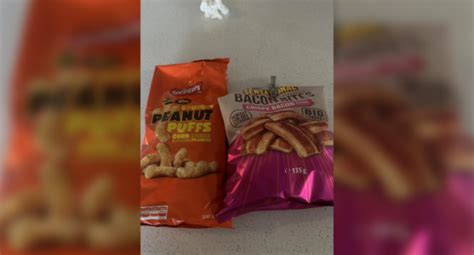
Achieving perfectly crispy roasted potatoes hinges on parboiling them in heavily salted water before roasting at high heat, according to a blind taste test conducted by Yahoo Lifestyle. The test, which sought to identify the ideal method for creating the crispiest exterior and fluffiest interior, revealed that this seemingly simple step, combined with the right roasting technique, makes all the difference.
Yahoo Lifestyle’s comprehensive test pitted various roasting methods against each other, with the explicit goal of determining the single best way to produce truly exceptional roasted potatoes. The methodology focused on controlling variables and meticulously documenting the results, ensuring that the final determination was based on empirical evidence rather than subjective preference. The parboiling step, often overlooked or downplayed in many recipes, emerged as the pivotal factor separating the merely good from the truly extraordinary.
The process began with selecting uniform Yukon Gold potatoes, known for their creamy texture and ability to crisp well. Each batch of potatoes was cut into roughly equal sizes to ensure even cooking. The key differentiator among the batches was the pre-roasting treatment: some were roasted directly, some were soaked in cold water, and others were parboiled in heavily salted water, a method that proved to be the game-changer.
“The potatoes parboiled in heavily salted water came out on top,” the Yahoo Lifestyle report stated. The high salt content in the water not only seasons the potatoes from the inside out but also helps to draw out moisture, promoting a crispier crust during roasting. The parboiling process itself gelatinizes the starches on the surface of the potatoes, creating a rough texture that further enhances crisping in the oven.
After parboiling, the potatoes were tossed with olive oil, salt, and pepper, and then roasted in a preheated oven at a high temperature (400°F or higher). The high heat is essential for achieving that desirable golden-brown, crispy exterior. The potatoes were flipped periodically during roasting to ensure even browning on all sides.
The blind taste test involved multiple participants who sampled each batch of potatoes without knowing which method had been used to prepare them. The tasters evaluated the potatoes based on several criteria, including crispness, flavor, texture (both exterior and interior), and overall appeal. The potatoes that had been parboiled in heavily salted water consistently received the highest scores across all categories.
The Yahoo Lifestyle report emphasizes that the type of fat used for roasting also plays a role in the final outcome. While olive oil was used in the test, other fats such as duck fat or clarified butter can impart even more flavor and crispness. The choice of seasoning is also a matter of personal preference, with options ranging from simple salt and pepper to more complex blends of herbs and spices.
The findings of this blind taste test provide valuable insights for both home cooks and professional chefs looking to elevate their roasted potato game. By understanding the scientific principles behind each step of the cooking process, it’s possible to consistently achieve crispy, flavorful, and perfectly cooked roasted potatoes every time. The key takeaway is that parboiling in heavily salted water is not just an optional step but a crucial element in achieving potato perfection.
Detailed Breakdown of the Process and Findings:
The Yahoo Lifestyle article delves deep into the specific steps and rationale behind each technique tested. Here’s a more granular breakdown:
-
Potato Selection: Yukon Gold potatoes were selected due to their balanced starch content, which contributes to both a creamy interior and a crispy exterior. Other varieties, such as Russet potatoes, could also be used, but the cooking time and texture might need to be adjusted accordingly.
-
Cutting Technique: Uniformity in size is crucial for even cooking. Potatoes were cut into roughly 1-inch pieces. Larger pieces will take longer to cook through, while smaller pieces may become overly crispy or even burn.
-
Parboiling in Heavily Salted Water: This is the most critical step. The potatoes were placed in a pot of cold water, which was then brought to a boil. Salt was added generously (approximately 1-2 tablespoons per quart of water). The potatoes were parboiled until they were slightly tender but still firm enough to hold their shape (about 8-10 minutes). This step gelatinizes the starches on the surface, creating a rough texture that promotes crisping during roasting. The salt penetrates the potatoes, seasoning them from within and drawing out moisture.
-
Draining and Roughing Up: After parboiling, the potatoes were drained thoroughly and placed back in the pot. They were then gently shaken or tossed to rough up the edges. This creates even more surface area for crisping. The Yahoo Lifestyle article might have demonstrated slightly different variations of “roughing up” the potatoes, depending on the specific experiment parameters they employed.
-
Roasting: The potatoes were tossed with olive oil (or another chosen fat) and seasoned with salt and pepper (or other desired seasonings). They were then spread out in a single layer on a baking sheet. Overcrowding the pan can lead to steaming instead of roasting, preventing the potatoes from becoming crispy. The oven was preheated to a high temperature (400°F or higher). The potatoes were roasted, flipping them occasionally, until they were golden brown and crispy on all sides (about 30-45 minutes).
-
Variations Tested: The Yahoo Lifestyle test likely included several variations to isolate the impact of each factor:
- No Parboiling: Potatoes were roasted directly without any pre-treatment. This served as the control group.
- Soaking in Cold Water: Potatoes were soaked in cold water for a period of time before roasting. This is sometimes done to remove excess starch, which can theoretically contribute to crispiness, but the taste test results suggested it was less effective than parboiling.
- Different Fats: The test may have explored the use of different fats for roasting, such as olive oil, duck fat, or clarified butter.
- Different Seasonings: While the base seasoning was salt and pepper, the test may have included variations with herbs, spices, or garlic.
Why Parboiling Works:
The science behind parboiling in heavily salted water is multi-faceted:
-
Gelatinization of Starches: Heating potatoes in water causes the starch granules on the surface to absorb water and swell, a process called gelatinization. This creates a sticky, rough texture that provides more surface area for the Maillard reaction to occur during roasting. The Maillard reaction is a chemical reaction between amino acids and reducing sugars that is responsible for the browning and flavor development in cooked foods.
-
Moisture Removal: The salt in the water draws out moisture from the potatoes through osmosis. Less moisture means the potatoes will crisp up more effectively in the oven.
-
Seasoning from Within: The salt penetrates the potatoes during parboiling, seasoning them evenly throughout.
-
Even Cooking: Parboiling partially cooks the potatoes, ensuring that they are cooked through by the time the exterior is crispy. This prevents the common problem of potatoes being crispy on the outside but undercooked on the inside.
Alternative Roasting Techniques and Considerations:
While the Yahoo Lifestyle test highlighted the effectiveness of parboiling in heavily salted water, there are other techniques and considerations that can contribute to perfect roasted potatoes:
-
Type of Potato: Different varieties of potatoes have different starch contents and textures. Yukon Gold potatoes are a good all-around choice, but Russet potatoes can also be used for a more rustic, fluffy interior. Waxy potatoes, such as red potatoes, are less suitable for roasting as they tend to hold their shape and don’t crisp up as well.
-
Fat Selection: The type of fat used for roasting can significantly impact the flavor and crispness of the potatoes. Olive oil is a common choice, but duck fat, goose fat, or clarified butter can impart even more flavor and crispness. Animal fats have a higher smoke point than olive oil, allowing for higher roasting temperatures without burning.
-
Oven Temperature: A high oven temperature (400°F or higher) is essential for achieving a crispy exterior. The high heat promotes rapid moisture evaporation and the Maillard reaction.
-
Air Circulation: Ensuring good air circulation around the potatoes is crucial for even browning. This can be achieved by spreading the potatoes out in a single layer on a baking sheet and avoiding overcrowding the pan. Using a perforated baking sheet can also improve air circulation.
-
Flipping: Flipping the potatoes periodically during roasting ensures even browning on all sides.
-
Seasoning: The choice of seasoning is a matter of personal preference. Salt and pepper are essential, but other options include herbs (such as rosemary, thyme, or oregano), spices (such as paprika, garlic powder, or onion powder), and garlic. Adding herbs and spices towards the end of the roasting process can prevent them from burning.
-
Adding Aromatics: Adding aromatics such as garlic cloves, shallots, or onions to the roasting pan can infuse the potatoes with flavor.
-
Using a Rack: Some cooks prefer to roast potatoes on a wire rack placed inside a baking sheet. This allows for even better air circulation and crisping.
-
Preheating the Baking Sheet: Preheating the baking sheet in the oven before adding the potatoes can help to jumpstart the crisping process.
-
Resting: Allowing the potatoes to rest for a few minutes after roasting can help them to crisp up even further.
Extending the Analysis:
The Yahoo Lifestyle article provides a solid foundation for understanding the science behind perfect roasted potatoes. However, further research could explore the following areas:
-
Impact of Different Salt Types: The test could explore the impact of different types of salt (e.g., kosher salt, sea salt, table salt) on the crispness and flavor of the potatoes.
-
Effect of Different Parboiling Times: The test could vary the parboiling time to determine the optimal duration for different potato varieties.
-
Comparison of Different Potato Varieties: A side-by-side comparison of different potato varieties (e.g., Yukon Gold, Russet, red potatoes) using the same roasting method could provide valuable insights into their respective strengths and weaknesses.
-
Impact of Different Oven Types: The test could be conducted using different types of ovens (e.g., convection oven, conventional oven) to determine the optimal settings for each.
-
The Role of Baking Soda: Some recipes call for adding baking soda to the parboiling water. Baking soda increases the alkalinity of the water, which can further promote the Maillard reaction and enhance crisping. This could be another area for investigation.
-
Examining Different “Roughing Up” Techniques: A controlled experiment could explore whether techniques such as tossing in a colander or gently pressing each potato individually yield significantly different results.
FAQ:
Q1: Why is parboiling potatoes in heavily salted water so important for achieving crispy roasted potatoes?
A: Parboiling gelatinizes the starches on the surface of the potatoes, creating a rough texture that promotes crisping. The high salt content seasons the potatoes from the inside and draws out moisture, leading to a crispier crust during roasting. According to Yahoo Lifestyle’s taste test, “The potatoes parboiled in heavily salted water came out on top,” highlighting the significance of this step.
Q2: What kind of potatoes are best for roasting?
A: Yukon Gold potatoes are generally recommended due to their balanced starch content, which results in a creamy interior and a crispy exterior. Russet potatoes can also be used for a more rustic texture, but waxy potatoes like red potatoes are less suitable for roasting.
Q3: What temperature should I roast potatoes at to get them crispy?
A: Roasting potatoes at a high temperature, typically 400°F (200°C) or higher, is essential for achieving a crispy exterior. This high heat promotes rapid moisture evaporation and the Maillard reaction, which is responsible for browning and flavor development.
Q4: What type of fat is best for roasting potatoes?
A: While olive oil is a common and acceptable choice, fats with higher smoke points like duck fat or clarified butter can impart even more flavor and crispness. The Yahoo Lifestyle report used olive oil in its testing but acknowledged that other options exist.
Q5: Can I use different seasonings for my roasted potatoes?
A: Absolutely. While salt and pepper are fundamental, you can customize your roasted potatoes with various herbs (rosemary, thyme), spices (paprika, garlic powder), or aromatics (garlic cloves, shallots) to suit your personal preferences. Just remember to add delicate herbs towards the end to prevent burning.









